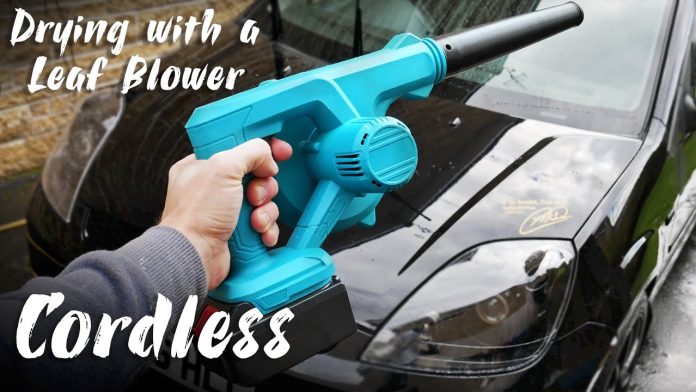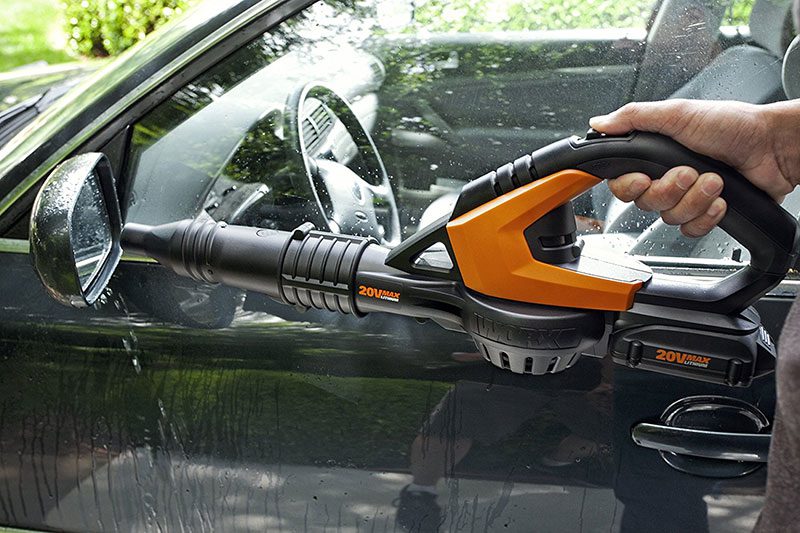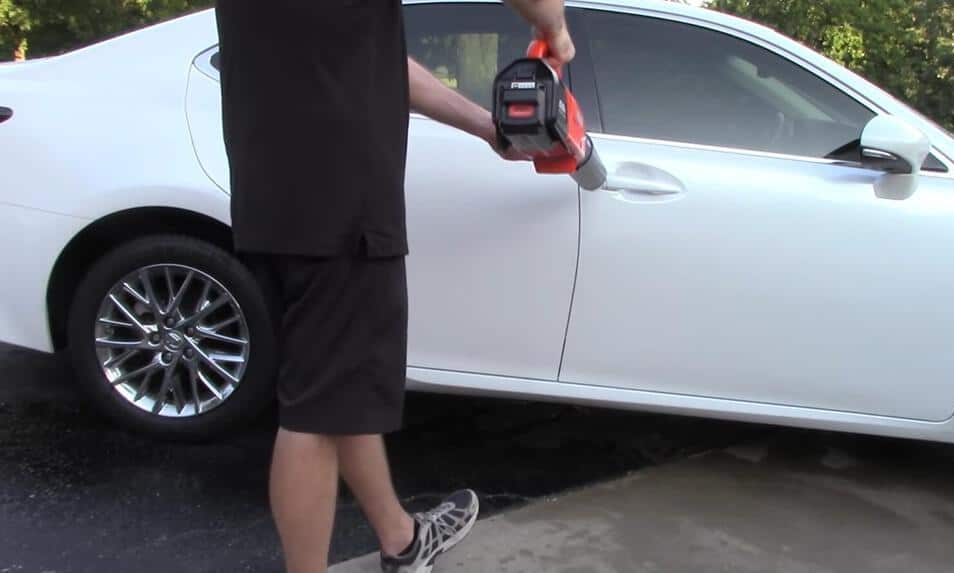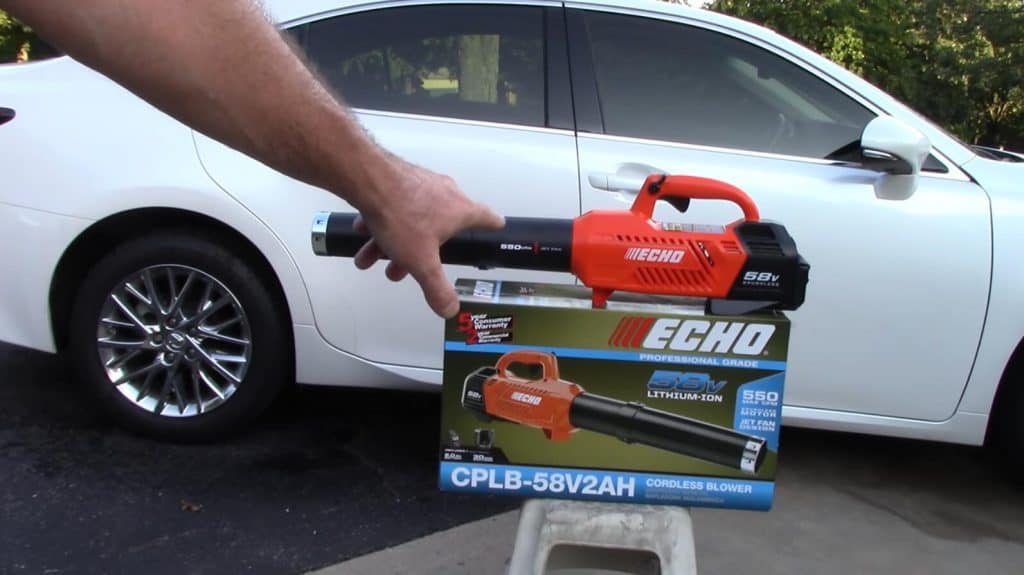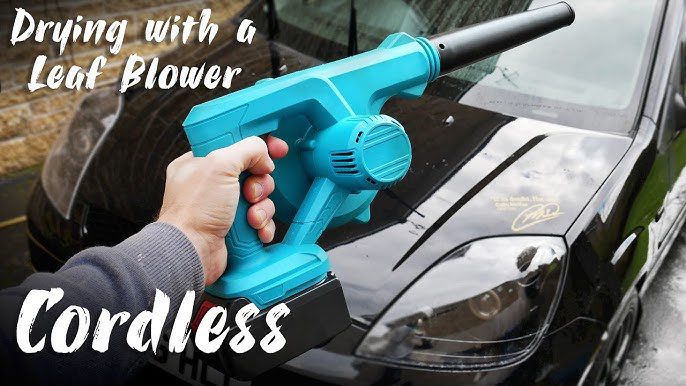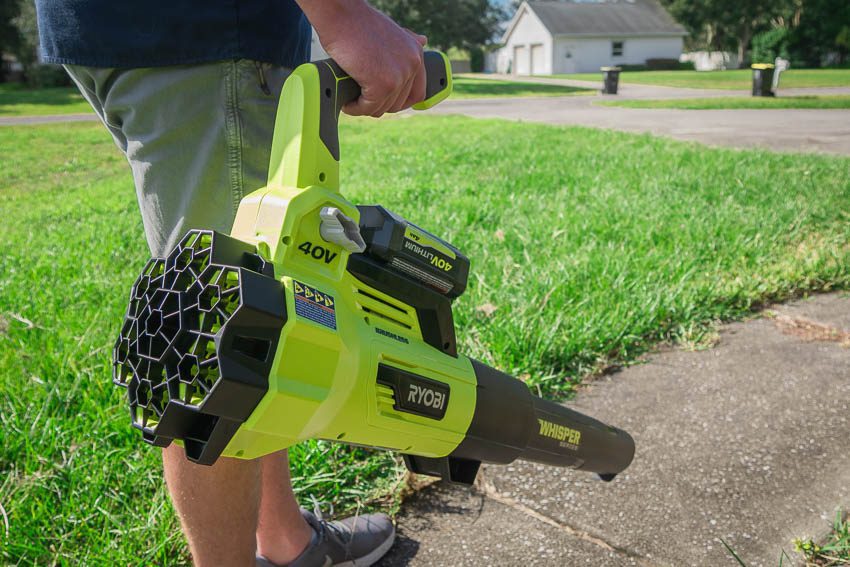So you just finished giving your car a good scrub down, and now you’re faced with the age-old question – how do you dry it? While there are many traditional methods, have you ever considered using a leaf blower? Yes, you read that right.
A leaf blower could be your new best friend when drying your car efficiently and effectively. In this article, we’ll explore whether using a leaf blower is a practical solution for drying your car and delve into the pros and cons of this unconventional method.
Using a Leaf Blower to Dry Car
Have you ever wondered if there’s a more efficient way to dry your car after washing it? Well, look no further! A leaf blower can be a game-changer for quickly and effectively drying your car’s exterior.
In this article, we will explore the advantages and disadvantages of using a leaf blower, how to choose the right one and take you through a step-by-step process to ensure a streak-free and spotless finish. We will also discuss some alternatives to leaf blower drying and address frequently asked questions. So, let’s get started!
Advantages of using a leaf blower
Using a leaf blower to dry your car comes with several advantages. First and foremost, it saves you a significant amount of time. Traditional methods, such as towels or chamois, can be time-consuming and may require multiple passes to achieve a dry surface. With a leaf blower, you can cover a large area quickly, allowing you to move on to other tasks or enjoy your sparkling clean car sooner.
Additionally, a leaf blower is a versatile tool that can be used for various purposes around your home, making it a worthwhile investment. It can help clear debris from your driveway, sidewalks, and patio, giving your outdoor spaces a tidy appearance. So not only will it serve as a valuable car drying tool, but it will also come in handy for other outdoor cleaning tasks.
Disadvantages of using a leaf blower
While using a leaf blower may have advantages, it’s essential to consider the potential disadvantages. One of the main concerns is the possibility of blowing debris onto your freshly cleaned car. Suppose the area where you’re drying your car is surrounded by trees or other sources of debris. In that case, it’s crucial to exercise caution and ensure the air stream from the leaf blower doesn’t bring any unwanted particles onto your car’s surface.
Another disadvantage is the noise level produced by leaf blowers. These tools can be loud, which may bother you or your neighbors. If noise concerns you, it’s worth considering electric leaf blowers, which tend to be quieter than their gas-powered counterparts.
Choosing the right leaf blower
Choosing a suitable leaf blower for the job is essential to ensure efficient and effective car drying. There are a few factors to consider when making your selection.
First, decide between a gas-powered or electric leaf blower. Gas-powered blowers tend to be more powerful, making them suitable for larger vehicles or heavily soiled cars. However, they are often louder, require regular maintenance, and emit exhaust fumes. Electric blowers, on the other hand, are generally quieter, lightweight, and environmentally friendly. They are suitable for most average-sized cars and offer hassle-free operation.
Second, consider the airspeed and airflow of the leaf blower. Opt for a blower with sufficient power to effectively blow away water droplets without damaging your car’s paint or creating swirl marks. Look for a blower with adjustable settings so you can control the intensity of the airflow based on your specific needs.
Lastly, check the weight and ergonomics of the leaf blower. You’ll want a comfortable model to hold and maneuver for an extended period, as drying a car can take some time. Consider aspects such as handle grip, balance, and overall design to ensure maximum comfort and ease of use.
Preparing the car for drying
Before diving into the car drying process, it’s crucial to prepare your vehicle correctly. Start by giving your car a thorough wash to remove any dirt, grime, or debris that may be present. This will minimize the risk of scratching your car’s surface during drying. Use a high-quality car shampoo, soft sponge, or microfiber wash mitt to clean the exterior gently.
Once your car is clean, rinse it thoroughly with clean water to ensure all the soap residue is removed. Ensure all the doors, windows, and sunroof are closed to prevent water from entering the interior during drying.
Safety Precautions
Now that your car is ready for drying, taking some safety precautions is essential to ensure a hazard-free experience.
Protective gear
Wearing protective gear is crucial when using a leaf blower. Wear safety glasses to protect your eyes from flying debris or water droplets. Also, ear protection can help minimize the noise level and protect your hearing during drying.
Caution around delicate areas
While a leaf blower is generally safe on your car’s exterior, it’s essential to exercise caution around delicate areas such as rearview mirrors, antennas, and any loose or fragile accessories. Directing a strong airflow or accidentally bumping these areas with the blower can cause damage. Take your time and be mindful of the airflow direction to prevent mishaps.
Avoiding contact with debris
If you’re drying your car in an area where debris is present, such as leaves or small rocks, avoiding contact with them is essential. Getting too close to debris can cause it to be blown onto your car’s surface, potentially scratching it. Be aware of your surroundings and adjust your drying technique accordingly.
Proper handling of the leaf blower
When handling the leaf blower, always hold it firmly and ensure your hands are clear of the air intake area. Avoid pointing the blower toward people or animals, as the high airflow can cause discomfort or injury. It’s also crucial to read the manufacturer’s instructions and familiarize yourself with your leaf blower’s specific features and operation to ensure safe and proper handling.
Step-by-Step Process
Now that you’re equipped with the necessary knowledge and safety precautions let’s dive into the step-by-step process of using a leaf blower to dry your car.
Step 1: Thoroughly wash the car
As mentioned earlier, start by thoroughly washing your car using a high-quality car shampoo and a soft sponge or microfiber wash mitt. Ensure all dirt, grime, and debris are removed to minimize the risk of scratching your car’s surface during drying.
Step 2: Choose an appropriate area
Select an appropriate area for drying your car. Ideally, choose a shaded spot to prevent the sun from drying the water droplets before you have a chance to blow them away. If shade isn’t available, try to time your drying process to coincide with a cloud covering or cooler temperatures to avoid water spots caused by premature drying.
Step 3: Prepare the leaf blower
Before starting the leaf blower, ensure the battery (if electric) or fuel (if gas-powered) is adequately charged or filled. Check the blower for any loose parts or debris that may interfere with its operation. Adjust the settings on the blower to a suitable speed and airflow intensity for car drying.
Step 4: Start drying with the leaf blower
Hold the blower firmly and blow the water droplets off your car’s surface. Begin from the top and work your way down, using broad strokes across the panels. Maintain a distance of about 12-18 inches from the car’s surface to prevent any potential damage.
Step 5: Pay attention to crevices and tight spaces
As you dry your car, pay close attention to crevices, tight spaces, and hard-to-reach areas such as side mirrors, grilles, and door handles. Use the blower’s nozzle attachment or adjust the blower’s settings to a lower airflow for more precise drying in these areas.
Step 6: Final touch-ups
Once you’ve completed the drying process, closely examine your car’s surface for any remaining water droplets. Use a microfiber towel or a soft, lint-free cloth to blot any remaining moisture, ensuring a streak-free finish gently. Pay special attention to areas that collect water, such as door jambs and trunk edges.
Alternatives to Leaf Blower Drying
While using a leaf blower can be an efficient way to dry your car, there are a few alternative methods you can consider.
Microfiber towels
Microfiber towels are highly absorbent and gentle on your car’s surface, making them a popular choice for drying. They can be used with a leaf blower or as a standalone method. Pat the surface of your car dry, working in small sections to avoid any water spots.
Air drying
If time is not a constraint and you can access a well-ventilated area, air drying can be an effective alternative. Park your car in a shaded area with good airflow, and let nature take care of the drying process. However, remember that air drying may take longer than other methods.
Water blade
A water blade is a rubber tool designed to remove water from your car’s surface rapidly. It can be used after washing your car or with a microfiber towel or leaf blower.
When using a water blade, start from the top of your vehicle and gently glide the blade across the panels, removing most of the water in a single pass.
Frequently Asked Questions
Will a leaf blower damage car paint?
When used correctly and with the appropriate precautions, a leaf blower should not damage your car’s paint. However, it’s crucial to maintain a safe distance, adjust the blower’s settings to a suitable airspeed, and avoid any contact with delicate areas or debris that may scratch the surface.
Can I use a gas-powered blower?
Yes, you can use a gas-powered leaf blower for drying your car. Gas-powered blowers are more powerful and suitable for larger vehicles or heavily soiled cars. However, they can be louder, require regular maintenance, and emit exhaust fumes.
Can an electric leaf blower be used?
Absolutely! An electric leaf blower can be an excellent option for car drying. They are generally quieter, lightweight, and environmentally friendly. Electric blowers are suitable for most average-sized cars and offer hassle-free operation.
Can I dry the interior of the car as well?
While a leaf blower is primarily used for drying the car’s exterior, it can also blow air into the interior to speed up the drying process. However, exercise caution around sensitive areas such as electronic components and upholstery to prevent damage or displacement.
Conclusion
Using a leaf blower to dry your car after washing it can save you time and effort, providing a streak-free and spotless finish. By following the step-by-step process outlined in this article and taking necessary safety precautions, you can achieve professional-level results quickly.
Remember to choose the suitable leaf blower for your needs, prepare your car adequately, and consider alternatives if leaf blower drying isn’t feasible for you. With a bit of practice and the right tools, you’ll have a pristine car that shines like new after every wash. Happy drying!

